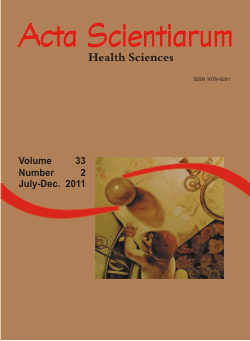Prevalência de transtornos depressivos e de ansiedade em pacientes obesos submetidos à cirurgia bariátrica
Resumen
A obesidade mórbida está relacionada a muitos transtornos psiquiátricos e possui como opção terapêutica a cirurgia bariátrica. Objetivo: caracterizar a prevalência de transtornos depressivos e de ansiedade em pacientes submetidos à cirurgia bariátrica no Hospital Universitário Regional de Maringá e do Centro de Cirurgia de Obesidade de Maringá. Métodos: o estudo foi realizado com 50 pacientes obesos mórbidos submetidos à Cirurgia Bariátrica em diferentes períodos: pré-operatório, um mês de pós-operatório, três meses de pós-operatório e seis meses de pós-operatório. A avaliação do Transtorno Depressivo foi realizada pela aplicação do Inventário de Depressão de Beck, sendo outro instrumento utilizado neste trabalho a Escala Hospitalar de Ansiedade e Depressão (HAD). Resultados: a prevalência de quadros sugestivos de ansiedade foi: 40% (20 pacientes) no pré-operatório, 18% no primeiro mês pós-operatório, 8% no terceiro mês pós-operatório e 14% no sexto mês pós-operatório. Quadros sugestivos de depressão foram encontrados em: 26% (13 pacientes) no pré-operatório, 10% no primeiro mês pós-operatório e no terceiro mês pós-operatório e 8% no sexto mês pós-operatório. Conclusão: Os níveis de Ansiedade foram altos no pré-operatório, diminuíram no 1º e 3º mês pós-operatório e voltaram a subir no sexto mês, atingindo níveis mais altos que no terceiro mês.Descargas
DECLARAÇÃO DE ORIGINALIDADE E DIREITOS AUTORAIS
Declaro que o presente artigo é original, não tendo sido submetido à publicação em qualquer outro periódico nacional ou internacional, quer seja em parte ou em sua totalidade.
Os direitos autorais pertencem exclusivamente aos autores. Os direitos de licenciamento utilizados pelo periódico é a licença Creative Commons Attribution 4.0 (CC BY 4.0): são permitidos o acompartilhamento (cópia e distribuição do material em qualqer meio ou formato) e adaptação (remix, transformação e criação de material a partir do conteúdo assim licenciado para quaisquer fins, inclusive comerciais.
Recomenda-se a leitura desse link para maiores informações sobre o tema: fornecimento de créditos e referências de forma correta, entre outros detalhes cruciais para uso adequado do material licenciado.























5.png)







